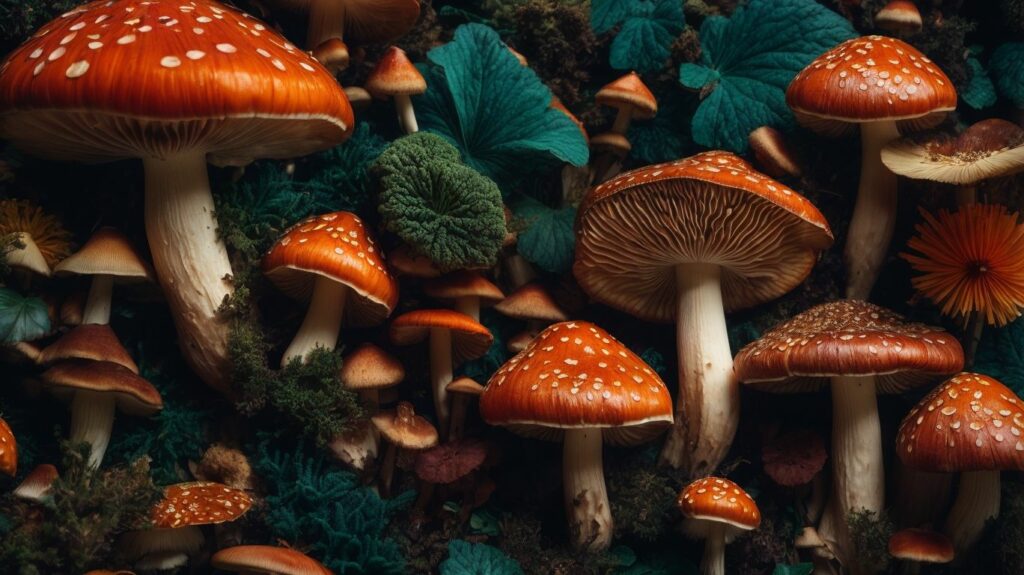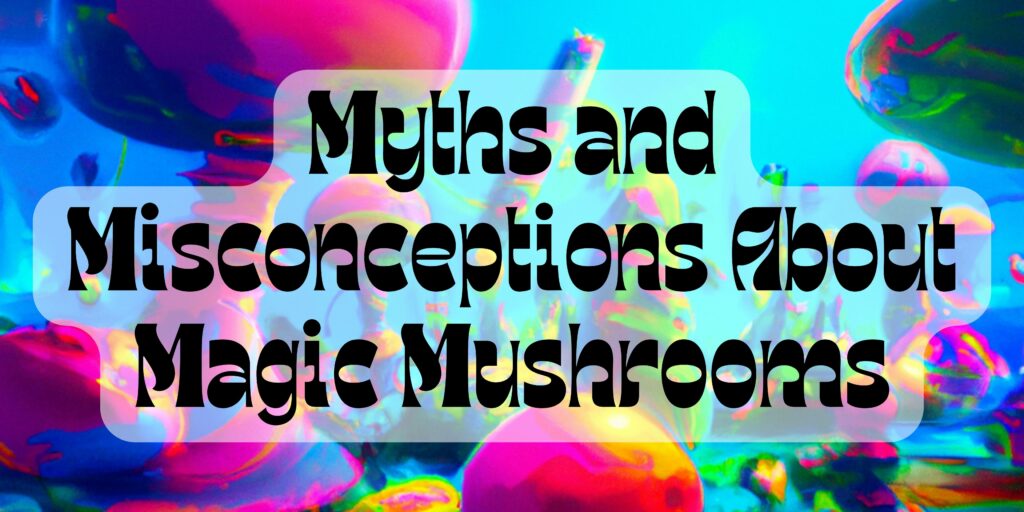Are you curious about the world of psychedelic mushrooms and their potential benefits? Look no further! In this article, we will explore the concept of shroom dosing and its impact on your mind and body. Whether you’re seeking therapeutic effects or a spiritual journey, understanding the dosing process is crucial. Let’s dive in.
What are Shrooms?
Shrooms, also known as magic mushrooms, are a type of fungi that contain the hallucinogenic compound psilocybin. These mushrooms have been used for centuries in spiritual and medicinal practices. Their effects can include altered states of consciousness, visual and auditory hallucinations, and profound introspection. It is important to note that shrooms should be used responsibly and in a safe environment, as their effects can vary greatly from person to person. If you are curious about shrooms, it is crucial to research and educate yourself about their potential risks and benefits. A pro-tip is to always start with a low dose and have a trusted sober friend present.
How Do Shrooms Work?
Psilocybin mushrooms, commonly known as “shrooms,” contain the psychoactive compound psilocybin. When consumed, psilocybin is converted into psilocin, which interacts with serotonin receptors in the brain, leading to altered perception and consciousness.
Here are the steps that explain how shrooms work:
- Ingestion: Shrooms are ingested orally, either by direct consumption or brewing into a tea.
- Absorption: The digestive system absorbs the psilocybin into the bloodstream.
- Conversion: In the body, psilocybin is metabolized into psilocin.
- Interaction: Psilocin binds to serotonin receptors in the brain, specifically the 5-HT2A receptors.
- Effects: The stimulation of these receptors results in hallucinations, changes in mood, and altered perception of time and space.
- Duration: The effects of shrooms typically last for 4 to 6 hours, depending on the dosage and individual factors.
What Are the Active Ingredients in Shrooms?
The primary components found in shrooms are psilocybin and psilocin, both of which are known for their hallucinogenic properties. Once ingested, psilocybin is converted into psilocin within the body, and both substances interact with serotonin receptors in the brain, resulting in altered perception, mood, and cognition. These substances are classified as Schedule I controlled substances due to their potential for abuse and lack of accepted medical use. While shrooms are often associated with their psychedelic effects, it’s important to remember that their consumption can carry risks and should be approached with caution.
Just like dating, there are many types of shrooms to choose from, but not all of them will give you a good trip.
What Are the Different Types of Shrooms?
When it comes to mushrooms, there are a variety of types that people consume for recreational or medicinal purposes. Some of these include Psilocybe cubensis, Psilocybe semilanceata, and Psilocybe azurescens. Each type possesses its own unique characteristics, such as appearance, potency, and effects on the mind and body. It is crucial to conduct thorough research and comprehend the distinctions between these types of shrooms before consuming them, as their effects can vary greatly. Always make sure to obtain shrooms from a reliable and trusted source.
How Are Shrooms Typically Used?
Shrooms, or psychedelic mushrooms, are typically used in the following ways:
- Eating them raw: Some people prefer to consume the mushrooms as they are, either on their own or mixed with other foods.
- Making tea: Shrooms can be brewed into a tea by steeping them in hot water, which can help to disguise their taste.
- Adding to food: Shrooms can be incorporated into recipes, such as soups or stir-fries, to enhance a meal.
- Capsules: For those who do not enjoy the taste, shrooms can be ground into a powder and encapsulated for easier consumption.
Fun fact: For thousands of years, some cultures have utilized psychedelic mushrooms for spiritual and ceremonial purposes.
What Is the Recommended Dose for Shrooms?
The recommended dose for shrooms varies depending on several factors, such as the individual’s experience with psychedelics, body weight, and desired effects. Typically, a starting dose for psilocybin mushrooms is around 1 to 2 grams. This is considered a low to moderate dose and can produce mild to moderate psychedelic effects. For those seeking a more intense experience, a higher dose of 3 to 5 grams may be recommended. It is important to start with a lower dose and gradually increase if desired, as the effects can vary greatly from person to person. Furthermore, it is crucial to always conduct research and follow harm reduction practices when consuming psychedelics.
A low dose of shrooms may leave you feeling like you’re in a trippy Disney movie, minus the singing animals.
What Are the Effects of a Low Dose of Shrooms?
A low dose of shrooms can result in mild effects, including altered perception, improved mood, and heightened creativity. Users may also experience a sense of euphoria, enhanced colors, and intensified sensory experiences. Some individuals may feel a stronger connection to nature and have profound insights or spiritual experiences. While a low dose is typically manageable and enjoyable for recreational users, it’s worth noting that individual reactions may vary and some people may be more sensitive to the effects of shrooms than others.
A moderate dose of shrooms – enough to have a trip, not enough to see unicorns.
What Are the Effects of a Moderate Dose of Shrooms?
A moderate dose of shrooms can have various effects on perception, cognition, and mood. These may include visual distortions, such as enhanced colors and patterns, and a different sense of time passing. On a cognitive level, users may experience introspection, increased creativity, and a feeling of interconnectedness. Emotionally, one may feel euphoria or heightened empathy. It’s important to keep in mind that the effects can differ based on individual tolerance, mindset, and surroundings. It’s recommended to have a trusted, sober trip sitter present and to be in a comfortable and secure environment.
Fun Fact: Studies have shown that psilocybin, the active compound in shrooms, may have potential in treating mental health conditions like depression and anxiety.
What Are the Effects of a High Dose of Shrooms?
A high dose of shrooms can result in intense hallucinations, sensory distortions, and significant changes in perception and consciousness. Users may encounter vivid visuals, such as perceiving patterns and colors that do not actually exist. The sense of time and self may become distorted, resulting in a sense of ego dissolution. Emotions can also be heightened, leading to feelings of euphoria or intense fear and anxiety.
It is important to note that the effects of a high dose can vary greatly depending on factors such as the individual’s mindset, environment, and the specific type and potency of the mushrooms consumed.
True story: I once knew someone who decided to consume a high dose of shrooms during a camping trip. They described their experience as a complete merging with nature, feeling as though they became one with the trees and the earth. They reported having profound insights and a deep sense of interconnectedness with everything around them. However, they also mentioned feeling overwhelmed at times and had to rely on their friends to provide a sense of grounding and support throughout the journey.
What Are the Risks and Side Effects of Shrooms?
Magic mushrooms, also known as “shrooms,” have both risks and side effects. These include the potential for a bad trip, which can lead to feelings of anxiety, paranoia, and even hallucinogen persisting perception disorder. Other risks include accidentally consuming poisonous mushrooms or engaging in dangerous behavior while under the influence.
Some common side effects may include nausea, vomiting, an increased heart rate, and impaired coordination. It is important to thoroughly research and understand the potential risks and side effects before consuming shrooms. If you do choose to use them, it is recommended to start with a low dosage in a safe and comfortable environment, and always have a sober friend present for support.
What Are the Short-Term Risks of Shrooms?
The short-term risks of shrooms include hallucinations, distorted perception of time, and impaired judgment. Users may also experience anxiety, paranoia, and panic attacks. Common physical side effects include an increased heart rate, elevated blood pressure, and nausea. In some cases, individuals may have a “bad trip” which can result in intense fear and psychological distress.
A real-life experience shared by a user involved a temporary loss of connection with reality, intense confusion, and profound fear during a shroom trip. This story emphasizes the importance of being aware of potential risks and ensuring a safe and supportive environment when using psychedelics.
What Are the Long-Term Risks of Shrooms?
What Are the Long-Term Risks of Shrooms?
Long-term risks of shrooms include persisting perception disorder (HPPD), flashbacks, and hallucinogen persisting psychosis. HPPD causes individuals to experience visual disturbances long after using shrooms. Flashbacks involve sudden reoccurrence of hallucinogenic effects without taking the drug. Hallucinogen persisting psychosis results in ongoing psychosis-like symptoms. These risks are more likely with high doses and frequent use. It’s essential to understand the potential long-term risks before using shrooms.
True story: A friend of mine experimented with shrooms in college and developed HPPD. Even years after using them, he still experienced visual disturbances, making everyday life challenging. This highlights the importance of being aware of the long-term risks and making informed decisions.
Just remember, the only thing trippier than shrooms is the list of possible side effects. Buckle up, it’s going to be a wild ride.
What Are the Possible Side Effects of Shrooms?
Possible side effects of shrooms include:
- hallucinations
- distorted perception of time and reality
- anxiety
- paranoia
- panic attacks
Other side effects may include:
- nausea
- vomiting
- muscle weakness
- lack of coordination
- increased heart rate
- elevated blood pressure
These effects can vary depending on the individual, dosage, and set and setting. It’s important to note that shrooms can interact with certain medications and medical conditions, so it’s crucial to consult a healthcare professional before use.
Pro-tip: Always start with a low dose and have a trusted and sober trip sitter present for a safe and enjoyable experience.
How to Safely Dose Shrooms?
Safely dosing shrooms is crucial to ensure a positive and safe psychedelic experience. Follow these steps to dose shrooms safely:
- Start with a low dose: Begin with a threshold dose of 1-1.5 grams to gauge your sensitivity.
- Research the strain: Different strains may have varying potencies, so familiarize yourself with the specific strain you have.
- Consider set and setting: Ensure you are in a comfortable and safe environment with trusted individuals.
- Have a trip sitter: It’s advisable to have a sober individual present who can provide support if needed.
- Stay hydrated: Drink water throughout the trip to prevent dehydration.
True story: A friend once followed these steps and had a transformative experience while safely dosing shrooms. They reported a deep sense of introspection and personal growth.
What Precautions Should Be Taken Before Dosing Shrooms?
Before consuming shrooms, it is essential to take certain precautions to ensure a safe and positive experience. Here are some important considerations:
- Research: Educate yourself about the effects, risks, and proper dosage of shrooms.
- Set and Setting: Choose a comfortable and familiar environment with trusted individuals present.
- Start Low: Begin with a low dose to assess your sensitivity and reaction to the substance.
- Know Your Source: Obtain shrooms from a reliable and reputable supplier to ensure quality and purity.
- Health Check: Evaluate your physical and mental well-being before using shrooms and avoid if you have a history of mental health disorders or are taking certain medications.
Pro-tip: Always have a sober and responsible individual present as a trip sitter to provide support and assistance if needed.
What Are the Best Practices for Dosing Shrooms?
When taking shrooms, it is crucial to follow best practices to ensure a safe and enjoyable experience. Here are some recommended steps to consider:
- Start with a low dose: Begin with a small amount to assess your reaction.
- Choose a comfortable setting: Find a calm and familiar environment to minimize anxiety.
- Have a trip sitter: It is highly suggested to have a trusted friend present to provide support if needed.
- Stay hydrated: Drink water throughout the trip to prevent dehydration.
- Set intentions: Reflect on your goals and intentions for the experience.
- Be mindful of interactions: Avoid combining shrooms with other substances.
Remember, everyone reacts differently to shrooms, so always do your research and approach dosing with caution.
Fact: Psilocybin, the active ingredient in shrooms, has shown potential in treating mental health conditions such as depression and anxiety.
Frequently Asked Questions
What is the recommended dosage for shrooms dosing?
The recommended dosage for shrooms dosing can vary depending on the type of mushroom, individual tolerance, and desired effects. However, a typical dose can range from 1-3 grams for a mild experience, and 3-5 grams for a more intense and profound trip.
How should I measure my shrooms dosing?
It is important to accurately measure your shrooms dosing for a safe and enjoyable experience. A digital scale is the most precise way to measure, but if one is not available, you can use a kitchen scale or even a common household item such as a coin to estimate the weight of your shrooms.
What factors can affect the effectiveness of shrooms dosing?
There are several factors that can affect the effectiveness of shrooms dosing, such as the individual’s body weight, metabolism, and tolerance. It is also important to consider the type and potency of the mushroom and the setting in which the shrooms are consumed.
How long does it take for shrooms dosing to take effect?
Shrooms dosing can take anywhere from 20 minutes to 2 hours to take effect, depending on various factors such as the individual’s metabolism, dosage, and method of consumption. It is important to be patient and allow enough time for the effects to fully kick in before considering taking more.
What happens if I accidentally take too much shrooms dosing?
If you accidentally take too much shrooms dosing, you may experience an intense and overwhelming trip. This can be frightening and uncomfortable, but it is important to remember that the effects are temporary and will eventually wear off. It is best to seek support from a trusted friend or have a trip sitter present to help you through the experience.
Can I microdose with shrooms dosing?
Yes, it is possible to microdose with shrooms dosing. Microdosing involves taking a small, sub-perceptual dose of shrooms (usually between 0.1-0.5 grams) every few days. This can provide benefits such as increased creativity and focus, without producing intense psychedelic effects. However, it is important to research and carefully measure your microdoses to avoid accidentally taking a larger dose.




